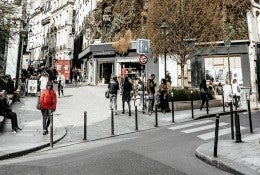Urban Edge
For close to 40 years, SPARK parks have been bringing hyper-proximity to Houston neighborhoods
Since 1983, the innovative SPARK parks program has taken a multi-use, community-based approach to increasing park acreage by turning school playgrounds into community parks. The effort has helped put many Houstonians within walking distance of active green space.

5 lessons Trader Joe’s can teach the city of the future
Making the cities of tomorrow more resilient to pandemics and other threats won’t require completely rethinking planning and design as we know them, but it will require functional problem-solving, practical solutions, better data mining and analysis, and more flexibility. All of which have helped the beloved grocery store chain improve its bottom line during the COVID-19 pandemic.

How Houston can become a 15-minute city
What does cancer treatment have to do with fighting climate change, the COVID-19 pandemic and neighborhood-level urban planning? Taking preventive steps today can literally save us all tomorrow.

Is Houston still one of the most generous cities in the US?
With a rich history as a philanthropic city, Houston has a reputation as one of the nation’s most charitable metros. However, a recent ranking doesn’t find the city to be quite so generous.

Unflashy but effective ways to slow traffic and save lives
Pedestrians and bicyclists accounted for 38% of all roadway deaths in Houston in 2019 — a 3% increase from 2018. Overall, 647 people were killed in fatal crashes in the Houston area in 2019, according to NHTSA data released in December. Prioritizing speed on local roads is the dangerous status quo in the U.S., but many cities are taking action to try and make safety the priority.

Physical Address
Rice University
Kraft Hall
6100 Main Street, Suite 305
Houston, TX 77005-1892
